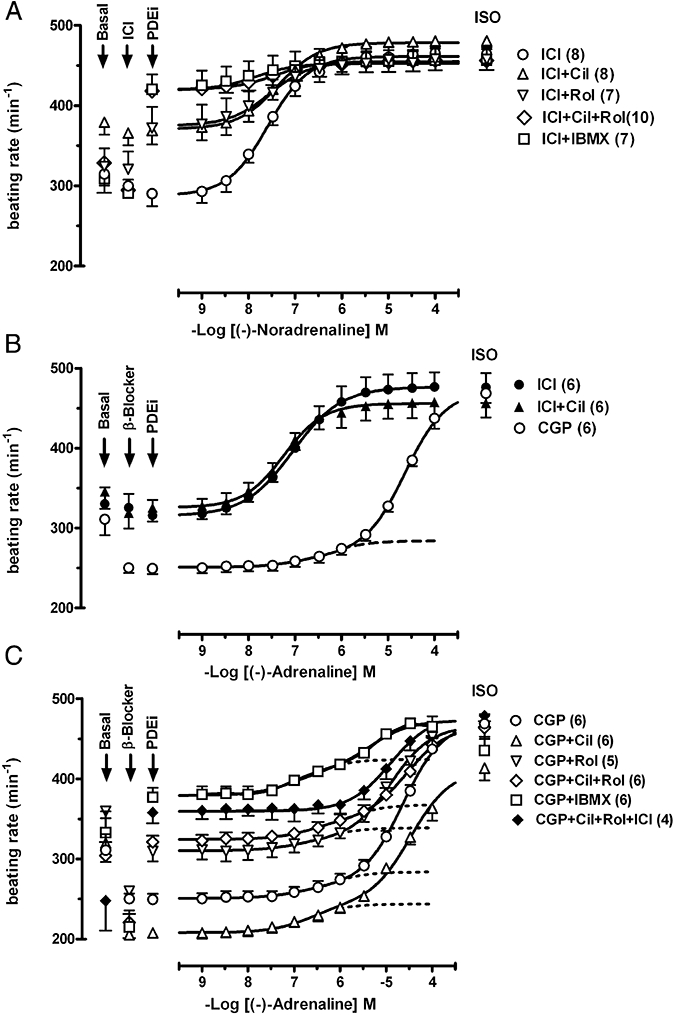Figure 1.

The influence of cilostamide (300 nmol·L−1, Cil), rolipram (1 µmol·L−1, Rol) and IBMX (10 µmol·L−1) on the sinoatrial tachycardia elicited by (−)-noradrenaline through β1-adrenoceptors and (−)-adrenaline through β2-adrenoceptors. (A) Lack of potentiation of the positive chronotropic effects of (−)-noradrenaline by PDE inhibitors in the presence of ICI118551 (50 nmol·L−1, ICI). (B) Effects of (−)-adrenaline mediated through β1-adrenoceptors in the presence of ICI118551 and through both β1- and β2-adrenoceptors in the presence of CGP20712A (300 nmol·L−1, CGP). Lack of potentiation of the effects of (−)-adrenaline by cilostamide in the presence of ICI118551. (C) Lack of potentiation of the effects of (−)-adrenaline by cilostamide, rolipram and IBMX through β2-adrenoceptors in the presence of CGP20712A. Blockade by ICI118551 of the β2-adrenoceptor-mediated tachycardia of (−)-adrenaline in the presence of both cilostamide and rolipram (see also Fig. 2A). Fits of some biphasic curves were constrained by using the effect of (−)-isoprenaline as maximum. Broken lines in (B) and (C) depict a small β2-adrenoceptor-mediated chronotropic component. Means ± SEM, numbers of right atria are given in parenthesis. ISO, (−)-isoprenaline (200 µmol·L−1); PDEi, PDE inhibitor.
